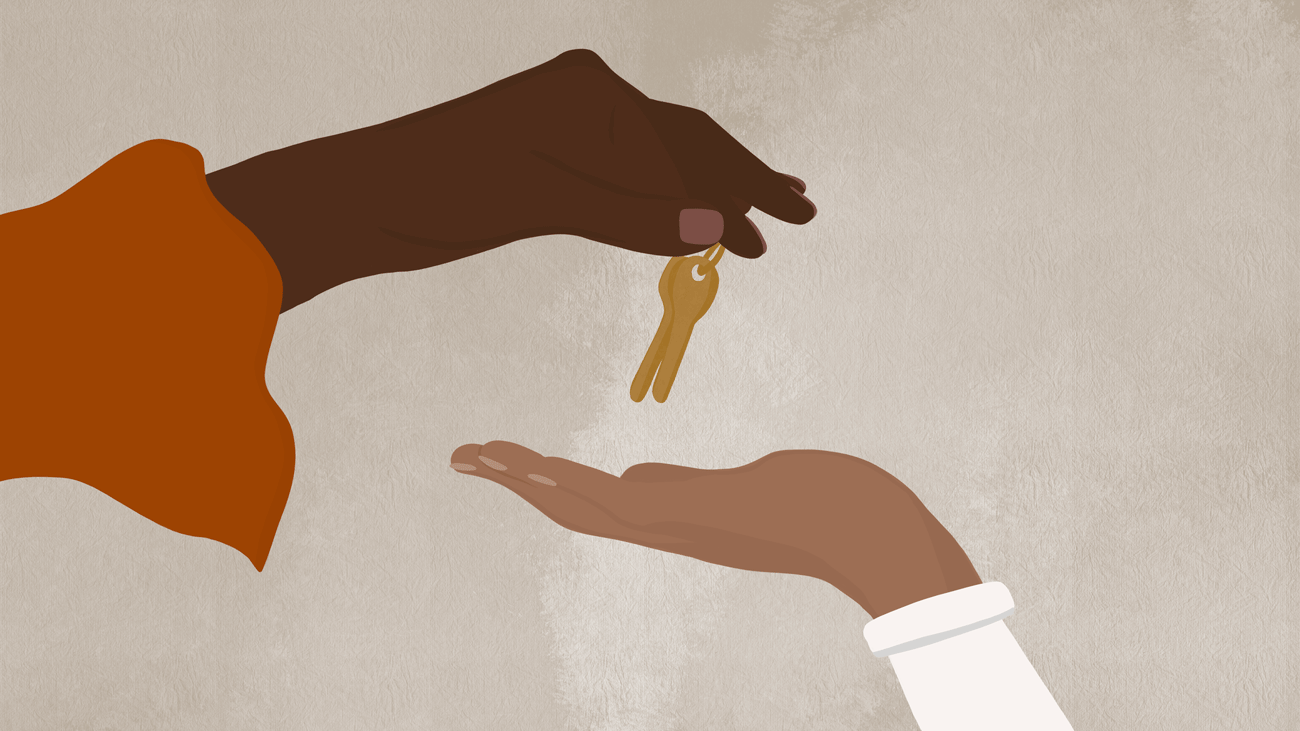Subletting a home or apartment can seem intimidating for even the most experienced renters. But subleasing an apartment isn’t quite rocket science, and after running through a few simple steps, you’ll be more than ready to sign an agreement and hand over a set of keys.
Table of Contents
- What is Subletting?
- Common Reasons for Subletting
- Steps to Subleasing a Home or Apartment
- Finding a Sublet
- Subletting Laws by State
What is Subletting?
Subletting, or subleasing, is when a tenant currently bound by a lease agreement finds someone else to rent their space for an agreed-upon time period that is less than the entire duration of the current lease. The governing tenant and the new renter form a new lease together whereby the sublessee is responsible for rent and all other duties and charges outlined in their contract. The original tenant remains in a lease with the landlord of the property — and liable until the expiration of the lease, while the new tenant is bound to the sublease with the governing tenant.
A tenant may also sublet and live in the same property. For example, if a tenant decides to rent out a room in their unit, depending on the rules in their contract, they could sublet to a roommate.
In a sublease, the landlord only collects rent from the original tenant, and the sublessee’s rent obligations are paid to the original tenant.
What is Assignment?
Assignment is a complete transfer of the original tenant’s interest in their lease. If you’re assigning a lease rather than subletting, there are some differences to note.
- In an assignment, the landlord typically deals directly with the new tenant. The new tenant would be bound by all provisions in the current lease, as well as the rental rate, unless any amendments are made.
- In the case of assignment, the assignor (the original tenant) gives up any and all rights to the premises and cannot return at a later time.
There are still some instances where the original tenant is liable after assigning their lease to a new subtenant. Landlords can include “continuing liability” clauses in lease agreements. These leave certain liabilities of a lease agreement on the shoulders of the original tenant instead of the subtenant. If a lease assignment agreement is used as the new contract, it’s important to attach a copy of the original lease agreement as well.
Common Reasons for Subletting

There are many reasons why people choose to sublet their homes or apartments.
- Temporary relocation. Whether it’s for work, family matters, or something else, individuals may have to relocate for a few weeks, months, or even a year. Instead of paying monthly for an empty apartment or breaking their lease, the best way to be able to come back to a home is by subleasing.
- Roommate changes. Roommates needing to break a lease early may choose to sublet to another qualified tenant until they are free from the lease. After expiration, the sublessee may choose to enter into a new lease with the landlord.
- Graduating early. Many college students graduate at the end of a fall semester and need to fill their apartments with sublessees for the spring semester.
Breaking a Lease
Someone renting a home or apartment may need to permanently leave a lease, but a landlord may not agree to an official lease breakage whereby the landlord would have to do the legwork in finding a replacement tenant and losing income. Instead, the tenant may find a sublessee to rent their space until the expiration of the lease.
Breaking a lease can have serious financial and legal implications, and can also affect the ability to find rental accommodations in the future. Still, sometimes it’s better to try to break a lease instead of subletting a space. There are a few steps to take in order to break a lease:
- First, it’s important to review the lease agreement. Some rental agreements have early termination clauses, and for those that don’t, it is still worth negotiating with the landlord to attempt to find a mutually beneficial situation.
- If so, obtain the landlord’s consent in writing and pay all fees associated with the lease. Sometimes a landlord will ask a tenant to forego their security deposit in lieu of a fee.
- Finally, help the landlord find a replacement tenant. Offering to find a replacement, or even having a person to recommend, can help negotiate a smooth and fair lease break.
Steps to Subleasing a Home or Apartment
Check Lease and Laws
Not all tenants have the right to sublet. In most instances, you’ll need to check your lease and even local laws to find out whether subletting is allowed. In some states or cities, such as Chicago and New York, subletting is permissible even if terms in the lease or your landlord states otherwise. Continue to the bottom of this page for a full list of states and their rules regarding subleasing.
Obtain Landlord Approval
Before going to the trouble of finding a sublessee or drawing up a rental agreement, you’ll likely need to get permission from your landlord. If the lease does not permit subletting, you may be able to negotiate the ability to sublet with your landlord, especially if there are extenuating circumstances that force you to temporarily move. If your state or city does not require permission to sublet, it’s still a good idea to inform your landlord that a sublessee will be occupying the property.
The best course to take is by getting your landlord’s signature on a landlord sublease consent form. If they sign this, you’re essentially good to go.
If a tenant sublets their apartment without their landlord’s consent, they can face serious consequences, up to and including eviction.
Find a Suitable Sublessee
Remember that you are liable for your sublessee. Because of this, when searching for a subtenant, you’ll want to enter into an agreement with a responsible party that is as qualified as you. To make sure this happens, you’ll need to perform a series of steps that normal landlords would usually take. In other words, even if your intended sublessee is a friend, you don’t want to take their word as gold. Instead, run a background and credit check. This will let you know if the intended sublessee has any history of evictions or anything else that would disqualify them from subletting.
The following qualities are valuable in a sublessee (or any tenant, for that matter):
- Clean and tidy;
- Clean criminal record;
- Clean eviction record;
- Good credit history;
- Low debt;
- Organized;
- Pays rent on time;
- Stable income; and
- Understands the value of property investments.
Use RentPrep.com ($18.95) for a limited check or MySmartMove.com ($35) for a more thorough sweep.
Sublease Agreement
When entering into a lease with a sublessee, you’ll need to make sure that the new tenant follows each rule set forth by your landlord and is legally bound to the provisions in the original lease. In addition, you’ll want to make sure that the lease covers every term necessary to protect you from liability, ensure that you receive timely payments, and are able to return to the property if that’s your intention.
Get free sublease agreements specific to each state here.
The sublease should, at a minimum, include:
- Start and end dates
- Rent amount
- Deposit amount
- Method of rent payment
- Late payment charges
- Utility payments and terms, and
- Signatures of both parties
Collect Rent and Deposit
When signing the lease, you’ll want to collect a deposit and the first month’s rent. If you don’t know your sublessee personally, the safest way to go about collecting the first payment round is by money order — that way, you know that the payment will clear. You will want to collect the payment at the lease signing and before the sublessee moves into the property.
Finding a Sublet (for Subletters)
For a potential subletter, finding a sublet arrangement can be difficult because landlords rarely offer short-term leases for long-term rental properties. There are a number of services that exist to help tenants find appropriate sublet arrangements:
- Apartmentlist.com
- College Student Housing Forums
- Craigslist Housing
- Facebook Marketplace
- Sublet.com
- Timeshares By Owner
- Vacation Rentals (AirBnB, Vacasa, VRBO)
Subletting Laws by State
| STATE | ALLOWED | LANDLORD CONSENT | STATUTE |
| Alabama | Yes | Dependent on lease | No statute |
| Alaska | Yes | Required | § 34.03.060 |
| Arizona | Yes | Dependent on lease | § 33-1310(7) |
| Arkansas | Yes | Dependent on lease | No statute |
| California | Yes | Dependent on lease | CCR § 1951.4, CCR § 1946.1 |
| Colorado | Yes | Yes | Colorado Landlord Tenant Handbook |
| Connecticut | Yes | Dependent on lease | No statute |
| Delaware | Yes | Dependent on lease | No statute |
| Florida | Yes | Dependent on lease | No statute |
| Georgia | Yes | Dependent on lease | No statute |
| Hawaii | Yes | Dependent on lease | Hawaii Residential Landlord-Tenant Code |
| Idaho | Yes | Dependent on lease | Idaho Landlord and Tenant Manual |
| Illinois | Yes | Dependent on lease | No statute |
| Indiana | Yes | Dependent on lease | No statute |
| Iowa | Yes | Dependent on lease | No statute |
| Kansas | Yes | Dependent on lease | No statute |
| Kentucky | Yes | Dependent on lease | No statute |
| Louisiana | Yes | Dependent on lease | CC 2713 |
| Maine | Yes | Dependent on lease | No statute |
| Maryland | Yes | Dependent on lease | No statute |
| Massachusetts | Yes | Dependent on lease | No statute |
| Michigan | Yes | Dependent on lease | No statute |
| Minnesota | Yes | Dependent on lease | No statute |
| Mississippi | Yes | Dependent on lease | No statute |
| Missouri | Yes | Required | Missouri’s Landlord-Tenant Law |
| Montana | Yes | Required | § 70-24-305 |
| Nebraska | Yes | Dependent on lease | No statute |
| Nevada | Yes | Dependent on lease | No statute |
| New Hampshire | Yes | Dependent on lease | No statute |
| New Jersey | Yes | Dependent on lease | NJ Department of Community Affairs |
| New Mexico | Yes | Dependent on lease | NM Department of Health Renter’s Guide |
| New York | Yes | Required | RPP § 226-b; NYCRR § 2525.6 |
| North Carolina | Yes | Dependent on lease | No statute |
| North Dakota | Yes | Dependent on lease | No statute |
| Ohio | Yes | Dependent on lease | No statute |
| Oklahoma | Yes | Dependent on lease | No statute |
| Oregon | Yes | Required | ORS 90.555 |
| Pennsylvania | Yes | Dependent on lease | No statute |
| Rhode Island | Yes | Dependent on lease | No statute |
| South Carolina | Yes | Required | § 27-35-60 |
| South Dakota | Yes | Dependent on lease | No statute |
| Tennessee | Yes | Dependent on lease | No statute |
| Texas | Yes | Required | § 91.005 |
| Utah | Yes | Dependent on lease | No statute |
| Vermont | Yes | Dependent on lease | No statute |
| Virginia | Yes | Dependent on lease | No statute |
| Washington | Yes | Dependent on lease | No statute |
| Washington, D.C. | Yes | Dependent on lease | No statute |
| West Virginia | Yes | Dependent on lease | No statute |
| Wisconsin | Yes | Dependent on lease | No statute |
| Wyoming | Yes | Dependent on lease | No statute |

